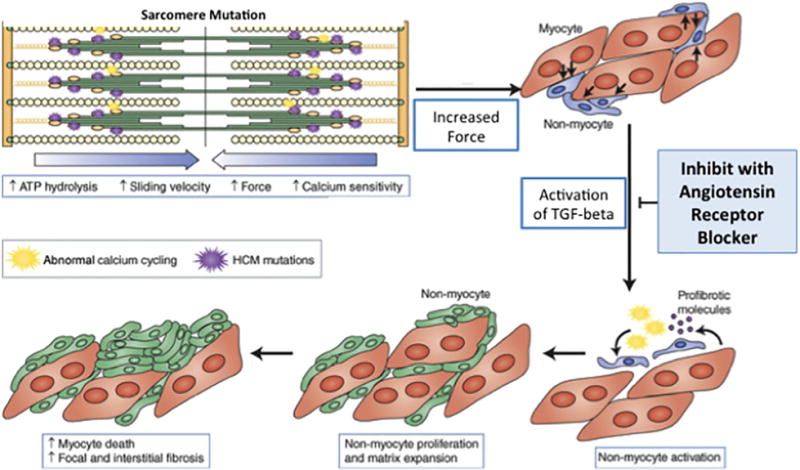Figure 1.

Proposed model of how sarcomere mutations may lead to hypertrophic cardiomyopathy and the potential impact of angiotensin receptor blockade. Studies using mouse models of hypertrophic cardiomyopathy (HCM) have suggested that sarcomere mutations increase force generation and calcium sensitivity, and activate profibrotic pathways early in disease pathogenesis, before cardiac hypertrophy develops. These abnormalities activate numerous cellular pathways, including transforming growth factor-beta (TGF-β) signaling pathways, culminating in the development of myocardial fibrosis and hypertrophy. In mouse models of HCM, inhibiting TGF-β activation, using either neutralizing antibody or losartan, attenuated the development of left ventricular hypertrophy and fibrosis if given early in the prehypertrophic phase of disease (modified from Teekakirikul P, et al. JCI; 2010 (12)).
